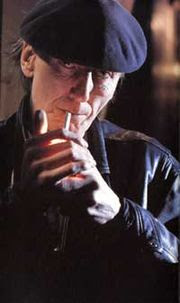- Welcome to Cook'd and Bomb'd.
-
 Snooker 23/24
by Norton Canes
Snooker 23/24
by Norton Canes
[Today at 10:23:16 AM] -
 Cass Report [split topic]
by jobotic
Cass Report [split topic]
by jobotic
[Today at 10:20:26 AM] -
 Childish pathetic stuff you...
by The Mollusk
Childish pathetic stuff you...
by The Mollusk
[Today at 10:15:49 AM] -
 The All New Comics Thread...
by Dayraven
The All New Comics Thread...
by Dayraven
[Today at 10:10:58 AM] -
 Comedy lines that just tickle...
by The Mollusk
Comedy lines that just tickle...
by The Mollusk
[Today at 10:09:35 AM] -
 Israel-Gaza Conflict III -...
by Funcrusher
Israel-Gaza Conflict III -...
by Funcrusher
[Today at 10:02:11 AM] -
 Tarantino's Final Film - 'The...
by druss
Tarantino's Final Film - 'The...
by druss
[Today at 09:57:04 AM] -
 The second thread of your...
by Janie Jones
The second thread of your...
by Janie Jones
[Today at 09:44:01 AM] -
 A renting story
by mattyc
A renting story
by mattyc
[Today at 09:39:53 AM] -
 Taskmaster s17
by Sleepless Slab
Taskmaster s17
by Sleepless Slab
[Today at 09:38:14 AM]
Members
 Total Members: 17,819
Total Members: 17,819 Latest: Jeth
Latest: Jeth
Stats
 Total Posts: 5,578,550
Total Posts: 5,578,550 Total Topics: 106,673
Total Topics: 106,673 Online Today: 1,086
Online Today: 1,086 Online Ever: 3,311
Online Ever: 3,311- (July 08, 2021, 03:14:41 AM)
Users Online
 Users: 86
Users: 86 Guests: 487
Guests: 487 Total: 573
Total: 573 JesusAndYourBush
JesusAndYourBush Norton Canes
Norton Canes Better Midlands
Better Midlands jobotic
jobotic Ted-Maul
Ted-Maul elliszeroed
elliszeroed Bob-Kate
Bob-Kate steveh
steveh Pink Gregory
Pink Gregory famethrowa
famethrowa batwings
batwings Paul Calf
Paul Calf sweeper
sweeper Fru
Fru Bartholomew J Krishna
Bartholomew J Krishna DreadedScotsman
DreadedScotsman dazed_and_bemused
dazed_and_bemused oggyraiding
oggyraiding earl_sleek
earl_sleek cakeinmilk
cakeinmilk Orino
Orino sadman2705
sadman2705 Hobo With A Shit Pun
Hobo With A Shit Pun Hugl
Hugl Psybro
Psybro George White
George White sevendaughters
sevendaughters Gulftastic
Gulftastic Iznik
Iznik madwolfinamatchbox
madwolfinamatchbox checkoutgirl
checkoutgirl paddy72
paddy72 MiddleRabbit
MiddleRabbit Magnum Valentino
Magnum Valentino Dr Trouser
Dr Trouser fuzzy sun
fuzzy sun Found Wound Round
Found Wound Round Dayraven
Dayraven ajsmith2
ajsmith2 Dr Rock
Dr Rock Shaxberd
Shaxberd thugler
thugler letsgobrian
letsgobrian Kankurette
Kankurette KennyMonster
KennyMonster Stoneage Dinosaurs
Stoneage Dinosaurs druss
druss Langdale
Langdale Pranet
Pranet daf
daf xtvkvp
xtvkvp Small Man Big Horse
Small Man Big Horse paddi
paddi non capisco
non capisco Zetetic
Zetetic Memorex MP3
Memorex MP3 katzenjammer
katzenjammer mattyc
mattyc Jack Shaftoe
Jack Shaftoe cromby
cromby ros vulgaris
ros vulgaris Sleepless Slab
Sleepless Slab holbob
holbob Epic Bisto
Epic Bisto DrGreggles
DrGreggles Greyhound
Greyhound Plunge
Plunge
User actions

